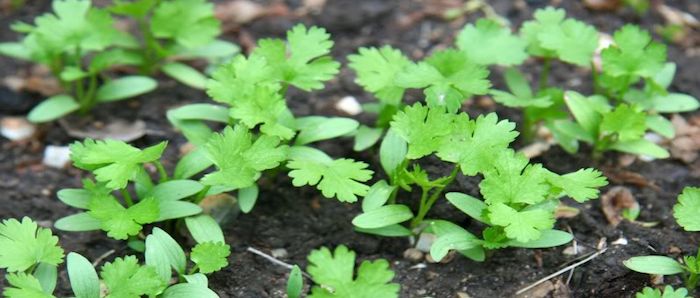Coriander is a very popular and healthy herb that you can easily grow in gardens and in containers. This herb is famous for being an addition to many vegetable and meat dishes. It has a very remarkable and tasty flavor. Coriander is known with different names. It is also called cilantro and Chinese parsley. Coriander is one of the easiest herbs to grow. If you want to grow coriander, follow this guide.
-
Choose a variety

This is one of the most important steps to grow coriander. There are many coriander varieties and each variety is different from the other in terms of productions. There are some varieties that are heavy produces, others are not. So, choosing the variety is very important because no one wants to have a low yield.
If you are looking for recommendations, experts gardeners strongly suggest that you should grow Calypso’ or ‘Leisure’. They are very productive and it is extremely easy to grow them too.
2. When to grow coriander
There is no specific time of the year to grow coriander. It depends heavily on where you live. Coriander likes moderate climates. It does well neither in frosty conditions nor in heat. If you live in a temperate climate region, it is best that you grow this tasty herb late spring. That is to say; between March and May.
For warm regions and tropical climates, it is recommended that you grow coriander at the end of the summer and at the beginning of the Fall.
3. Choose a good spot
A good spot for planting Cilantro means a spot where it can receive full sunlight daily for hours. Cilantro does not mind getting some shades if the weather is too hot but it needs at least 5 hours of access to direct sunlight.
Cilantro also requires a good quality well-drained soil with slightly low pH level. The acceptable pH level should be between 6.2 and 6.8. If you want to improve your soil’s quality add some compost, rotten leaves or manure to the top layer of the soil.
4. Planting
Poke some 1/4 inch deep holes to sow your seeds in them. Leave between each hole a distance of 8 inches. Plant the cilantro seeds in rows and keep at least 1 foot between the rows. Once you have sowed all the seeds, water them thoroughly. Cilantro loves moisture, frequent watering will help the seeds to germinate faster. If you provide them with an inch of water weekly, they will germinate in no longer than 3 weeks.
5. Fertilizing
Fertilizing cilantro is not essential but it is recommended for maximum growth. You should apply either a compost or an organic fertilizer to them when the seedlings are 2 inches (5.1) tall. Cilantro does not require much fertilization, 1/4 of a cup for every 25 feet (7.6 m) of growing space is enough.
6. Thinning
When the seedlings grow up to 2 or 3 inches (5.1 to 7.6 cm) tall, you should start thinning them. It is also recommended that you remove the small plants to create more space for the big ones to grow larger. You can pull them out by hand and use them in your cooking or just eat them raw and fresh.
7. Mulching
Mulching is important. It will help your plant grow and thrive. It prevents weeds from appearing allowing your plants to get more nutrients. Mulching also maintains moisture in the soil so your plants won’t dry. Therefore, you should apply some mulch to your plants once they are visible.
8. Harvesting
Harvesting cilantro is easy. All it takes is that you either cut the leaves on the top of the plant by hands or by a scissor or cut the stem of the plant at the base. You can start harvesting when the plant reaches 4 to 6 inches (10.2 to 15.2 cm) in height. When you are harvesting, keep in mind the following tips:
- You shouldn’t cut more than 1/3 of the plant so it can keep growing.
- If you harvest the leaves only, you will enjoy 2 or 3 more harvests as your plant will keep growing.
These are the most effective tips to grow coriander. If you follow these tips, you will be enjoying a heavy supply of this healthy plant. Don’t hesitate to contact us if you feel like you need more information, we are glad to help.



